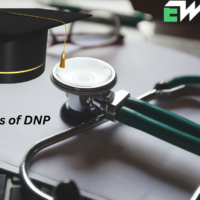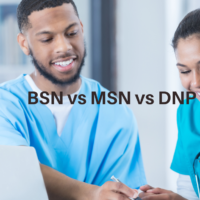Scholarships for Nursing Students in 2022 & 2023
It is no longer a surprise that nursing is currently one of the most popular courses to study worldwide. Because of the course’s relevance, the love that nurses have around the world, and the fact that nurses are well paid, the number of students choosing to major in nursing has long increased.
Nursing, according to Wikipedia, is a career in the healthcare industry that focuses on providing care to people so they can achieve, maintain, or regain their optimal health and quality of life.
Need some scholarship to fund your nursing studies? Fortunately, various scholarships are available to support prospective nurses in achieving their goals. From our research, here are a few examples of the different nursing scholarship opportunities available in the US and Canada in 2022/2023.
What Is the Cost of Studying Nursing in the US
A Bachelor of Science in Nursing (BSN) can cost as much as any other four-year degree. There is a considerable range in the average cost of nursing school. According to U.S. News, the average tuition for a four-year public school was $9,687, while for a four-year private school, it was $35,087.
Some people might choose alternative routes, such as an online Registered Nurse (RN) to BSN program, which can occasionally be less expensive and cost anywhere from $25,000 to $80,000. Although it might seem pricey, the average RN pay in 2019 was $75,330.
Scholarships for Nursing Students Opportunities in the USA 2023
For you, we’ve highlighted the best scholarships for nursing students available in the USA. Several famous universities in the US compete on a worldwide scale. Given this, it is logical to assume that many people who had the option to complete their nursing degrees would opt to enroll in an American university.
 First-Generation Scholarships for Nursing Students (USA)
First-Generation Scholarships for Nursing Students (USA)
Students who enroll in college for the first time in their families pave the way for others to follow in their footsteps. By reducing the financial strains related to higher education, these scholarships assist students in creating a new standard for themselves and their families.
Accessible to: Every candidate is a first-generation undergraduate student enrolled full-time. All academic fields, including nursing, are welcome to this program.
Requirements for Applications: Your school must be a participant in the Suder scholarship program.
Terms and Amount Awarded: Scholarships come with a $5,000 annual award and are extendable for an additional three years.
How to Apply: Ask your school’s financial aid office if they participate in the program if you want to learn more about this first-generation award.
Deadline: The deadline for this scholarship varies.
Accessible to: Seniors in high school who are the first in their family to enroll in college.
Application requirements: All career-focused students are welcome to apply. Students with minimal financial resources who have demonstrated a commitment to and involvement in their communities are given preference.
Terms and Amount Awarded: There are 125 scholarships, each worth $12,000. The scholarships must be used to pay for four-year college tuition in the states where the beneficiaries reside.
How to Apply: Fill out the online application.
Deadline: The deadlines change annually. To learn more, go to the McKelvey website.
Scholarships for Nursing Students with Disabilities in USA
Students with impairments may be unaware of all the nursing school scholarships. The following list of scholarships for high school and undergraduate students with disabilities includes various financing options, though it is not all-inclusive.
Accessible to: Full-time applicants or recipients of admission to a college or university program with a verified impairment.
Numerous scholarships are given out. The applicants’ dedication to nursing studies and professional achievement must be evident. The preference is given to undergraduate students. To find out the specific requirements for each scholarship, visit the website.
Terms and Amount Awarded: Any amount between $250 and $500 as a one-time prize.
How to Apply: Applicants must write a 1-2 page essay outlining how they intend to contribute to the nursing field and how their impairment affects their nursing practice. The application process includes a requirement for medical documentation of a handicap. Applications must be mailed in when finished.
Deadline: Every June 1
Accessible to: Students who are enrolled full-time at an American 2- or 4-year institution of higher learning that has earned accreditation. It is also possible to apply if you are a part-time student who cannot attend classes full-time due to a disability.
Application Requirements: Before accessing an application, candidates must register on disABLEDperson.com and join the community. Recipients of awards must present proof of their disabilities.
Terms and Award Amount: Every time competition is held, a $2,000 scholarship is given.
How to Apply: On the website, register and finish the application. Applicants must also write a 1,000-word limit essay in response to the writing prompt.
Deadline: Visit the DisABLEDperson website for details on the yearly deadlines.
Scholarships for Nursing Students That Don’t Require U.S. Citizenship
International students and non-citizen U.S. residents are both eligible for many scholarships. These awards aid in diversifying the nursing workforce by attracting more professionals from various backgrounds.
Accessible to: All undergraduates enrolled full-time in a 4-year program at an accredited university and have at least two semesters before graduation.
Requirements: Non-U.S. citizens and international students enrolled in a U.S.-based institution of higher learning are eligible for the award.
Terms and Award Amount: Each year, six scholarships worth $7,500 are given out. The recipients receive their money directly. There are two components to the award distribution. For the fall semester, the first half is given, and for the spring semester, the second.
How to Apply: Download and complete the online application. In addition, candidates must submit a financial aid application and a 500-word essay about their preferred healthcare vocation. Two letters of recommendation are also necessary. By the due date, all paperwork must be mailed and received.
Deadline: Deadlines vary each year; visit their website for more details.
Scholarships for Nursing Students who are Veterans in the US
Veterans interested in a career in nursing can apply for scholarships designed to give them financial compensation for the sacrifices they made for their nation. Veterans’ spouses, children, and parents may all be eligible for some scholarships. Veterans who want to reenter the workforce may benefit significantly from these financial incentives.
Accessible to: Members of the National Guard or Reserve who are presently enrolled or accepted in a VA-approved program or school at an accredited post-secondary institution and who have served on active duty, had an honorable discharge, or retired are eligible.
Application Requirements: Candidates must be US citizens and have completed basic and advanced training. Only former service personnel who held an E-5 or lower military level or currently own one are eligible to apply. Additionally, candidates must be in need of money.
Terms and Award Amount: Awards are worth $5,000. The funds must be used for school tuition and fees and sent directly to the institution.
How to Apply: Complete the online application. Additionally, a current FAFSA report needs to be submitted.
Deadline: For the spring scholarship, the deadline is November 15, and for the fall scholarship, April 30.
Accessible to: Students who are or have been members of any branch of the U.S. Army and are now enrolled in a baccalaureate, advanced nursing, or nurse anesthesia school, as well as their parents, spouses, and kids.
Application Requirements: Applicants must be American citizens. The recipient is not required to serve in the military because the Army Nurse Corps is not affiliated with the American Army. The U.S. Army’s grant recipients are ineligible to apply.
Amount Awarded and Terms: Award amounts are one-time payments of $3,000.
How to Apply: Online submission of an application and the necessary supporting documentation. Additional requirements include a personal statement, proof of military service, and letters of recommendation from academic and private sources.
Deadline: Every year, deadlines change. Every fall, the ANCA website updates with the most recent information.
Other scholarships for nursing students in the USA
Scholarships are available annually to students who are NBNA members or members of the local chapter, are enrolled in an undergraduate nursing school, and still have at least one full year of study left. Awards are worth between $1,000 and $6,000.
Provides money for tuition, fees, and other educational costs to students who are accepted or enrolled in a diploma, associate, baccalaureate, or graduate nursing program in exchange for working at an eligible NURSE Corps location after graduation. Candidates must be citizens of the United States (born or naturalized), nationals, or authorized permanent residents.
A prospective nurse presently enrolled in (or accepted for) an undergraduate nursing program will receive a $1,000 grant per year. To apply, you must either be a US citizen or have a current student visa.
Provide Continuing Professional Development scholarships to support members in acquiring knowledge and abilities outside conventional academic nursing education. A limited number of scholarships will still be offered for particular educational programs.
You can see more scholarships for nursing students offered in the US here.
Opportunities for Scholarships for Nursing Students in Canada 2023
 Nursing programs are less expensive in Canada compared to the United States and the United Kingdom. According to studies, tuition for nursing students in Canada will cost between C$20,000 and C$30,000 per year. Depending on the program and degree of study, this fee will change.
Nursing programs are less expensive in Canada compared to the United States and the United Kingdom. According to studies, tuition for nursing students in Canada will cost between C$20,000 and C$30,000 per year. Depending on the program and degree of study, this fee will change.
Although most students consider this price high, we can claim that it is still cheaper than Canadian nursing schools’ educational quality and material.
However, numerous nursing scholarships are available to aid students in taking advantage of Canada’s unrivaled educational system.
What Degrees Are There For Nursing In Canada?
Depending on your preferences, nursing schools in Canada offer the following degrees:
- Diploma
- Bachelor of Science in Nursing
- Master of Nursing
- D. in Nursing
What Do You Require To Study Nursing in Canada?
As mentioned earlier, the requirements will vary depending on your application programs.
However, the following is a list of the standard prerequisites you must meet to apply for nursing schools in Canada:
- Proof of your ability to speak English (IELTS, Pearson, or TOEFL)
- Certificate from high school (English, Mathematics, Biology, and Chemistry are the main subjects)
- A high school average grade of C
- Letter of recommendation
- Statement of Intent
- Writing samples
The school determines any additional requirements.
Top Canadian-Nursing Scholarships For International Students in 2023
Depending on the scholarship, there are different prerequisites for international students who want to apply for nursing scholarships in Canada. These scholarships for nursing students are available in Canada years 2022 and 2023.
Open to: Students in the US pursuing a degree in health-related fields are eligible for this scholarship.
Application Requirements: Medical-related courses from approved colleges and universities are required. This scholarship is not institution-specific.
Amount- Awarded: The program’s winner will get a $500 prize. If chosen, you must agree to a talent release and be willing to give a digital photo for the Sunshinebehavioralhealth.com exhibition.
How to apply: Participants are required to turn in an essay on the American opioid problem. When your paper is prepared, email richardf@sunshinebh.com with your contact details included.
Deadline: December 1 Each Year
Accessible to: Both high-achieving Canadian nationals and international students who wish to pursue a scholarship in Canada may apply for the SGS Dean’s Scholarship.
Application Requirements: It is exclusively accessible to master’s-level nursing students. You will need documentation to show that you have completed your undergraduate degree.
Amount-Awarded: Not specified
How to apply: It depends on the specific international award program, but most applications are online.
Deadline: Varies
Open to: No matter what degree you have, you are eligible to apply for this award.
Requirements: A minimum of three courses must have been completed. You must be enrolled in the program for which you are asking for financing and actively take classes. If you have won a CNF grant for the previous year and are applying in your last semester, you are not eligible.
Amount-Awarded: Over $50,000
How to apply: Their FluidReview website is used to submit applications. Visit their website for additional details.
Deadline: February 13, Each Year
Scholarships For Nursing Students With Disabilities In Canada
There are lots of scholarships available in Canada for people with disabilities to help them succeed as students! You can achieve your post-secondary ambitions with support from these scholarships, ranging from $1,000 to $5,000. Here is our ranking of Canada’s best awards for disabled students!
This scholarship is open to students who have had cancer treatment or are undergoing it. Emmy Duff, a remarkable young woman and three-time leukemia survivor who passed away at 23 in September 2012, was honored by having it named in her honor. Write a 300–500 word letter detailing your background, aspirations for the future, and reasons for applying for one of the twelve $2000 scholarships.
The Canadian Hearing Society provides 20 scholarships yearly to hard of hearing, deaf or both students. Instead of emphasizing academic achievement, this fellowship rewards students who have shown a dedication to improving the lives of Canadians who are Deaf or hard of hearing.
The fact that this scholarship is so transparent is its best feature. You can apply regardless of your post-secondary institution’s location or academic year! Send in your application and a few references to be considered for a $3,000 prize!
For Canadian college students with impairments, NEADS offers annual scholarships. You qualify if you have proven your capacity for self-advocacy, academic discipline, and civic engagement. Each year, there are different amounts of awards. They range from $1000 to $5000. To apply, visit their website.
Canadian Scholarships Specific for Nursing Students Who Live in Canada
Check out this award if you live in Canada’s frozen north and are pursuing a career in medicine or a health-related job like nursing. To apply, you must enroll in or begin a healthcare degree or diploma program.
Additionally, you’ll need to compose a brief essay covering the following subjects:
- How you have proven that you have the academic skills necessary to succeed in your chosen field.
- Your community’s involvement and contributions in the past and now.
- How receiving the scholarship will help the north.
Amount-Awarded: $1000
Deadline: May 15 every year
You can apply here.
This prize is completely non-repayable unless you promise to relocate to and work in northern Alberta after graduation. However, you must have lived in Alberta for at least a year before beginning your degree.
You can pledge to live and work in a particular area or town in northern Alberta that needs the assistance of a qualified nurse like you to get a grant of $18,000 instead of $9,000!
Amount: At least $9000
Deadline: April 30
Apply here
This scholarship is available to Northwest Territories residents who have lived there for at least two years and want to pursue careers in nursing or social work.
You must submit a brief essay explaining your need for assistance and information on your community involvement, professional growth, dedication to nursing, and the financial necessity to be considered.
Amount Awarded: $1000
Application Deadline: May 15
Apply
Four Canadian women (or permanent residents!) who are beginning their first year of an undergraduate STEM degree will receive funding thanks to a partnership between The De Beers Group and the UN Women HeForShe Thematic Champion Initiative.
Women from distant communities in Northern Ontario, Southern Alberta, the Northwest Territories, and Nunavut, as well as women of Indigenous ancestry, will be given preference.
Amount to be awarded: $2,175
Application Deadline: June 1
Other scholarships for nursing students in Canada 2022/2023
International students can apply for the Parker B. Francis Fellowship 2022, a total funding fellowship provided by Parker B. Francis. All U.S. and Canadian citizens are eligible for this scholarship.
This Ph.D. grant may be applied to clinical, laboratory, translational pulmonary, critical care, or sleep medicine studies.
Deadline: 10 October
Undergraduate In-Course Bursary Program 2022 is a Partial Funding international grant made available to international students by Concordia University, Canada. Students who qualify for this grant include: open to all nationalities.
This undergraduate or bachelor’s degree scholarship is available for any of the university’s courses.
You can get the scholarship application form here.
Deadline: 27 May
Visit this page to learn more about nursing scholarships available in Canada.
Frequently Asked Questions About Canadian and American Scholarships for Nurses
● Is there any nursing scholarship?
Yes! International students can study nursing in the US and Canada with the help of a variety of nursing scholarships. All you require is the proper knowledge, which this article offers.
● Can a Canadian get a Scholarship to an American University?
Yes! After finishing high school, hundreds of Canadian students travel abroad to complete their degrees. Due to the numerous chances these two systems provide, many students choose to continue their education in the US, the UK, or occasionally even the EU.
● How Can I Get Full Scholarships in Canada?
The nursing scholarships above can help you pay for your studies at Canadian nursing schools. All you have to do is adhere to the detailed procedure outlined in this article.
-
Are there scholarships for DNP students in US and Canada
Yes. It is a fact of life that funding postgraduate studies is very expensive. Getting financial aid is a stress free path to accomplishing your educational goals. It is every student dream to be considered for a grant, scholarship or financial aid for DNP studies. However, most DNP students take student loans and federal aids to finance their nursing studies. Our list below, though not exhaustive provide some of the best DNP scholarships available in the USA for year 2023.
- There are scholarships specifically for DNP students such as American Association of Nurse Practitioners (AANP) Scholarships that offers financial support to students who wish to excel in advanced nursing practice. You should be on the lookout for the next DNP funding cycle for 2023 since the funding cycle 2022 has already closed.
- Our DNP tutoring service offers grants of $1000 to US DNP student interested in advanced nursing practice in areas of mental health, aging, palliative care and community and primary care. Additionally, our DNP statistics help service will provide you with free statistical consultation for DNP data.
- John Hopkins University offers $45000 award through its DNP Advanced Practice Scholarship dubbed $45,000 AREAS OF EXPERTISE SCHOLARSHIP. It is designed to support nursing students who will advance the field of nursing. “Open to students interested in one of the following Johns Hopkins School of Nursing Areas of Expertise; Aging Care; Palliative Care and Symptom Management, or Community and Primary Care, Excellence Scholars may enroll in any of Johns Hopkins School of Nursing DNP Advanced Practice tracks. Scholarship provides support for up to six scholars annually”. Learn more about the scholarship here
However, we encourage students undertaking DNP studies to make inquiries or make application for scholarships for doctorate students. Since some of these scholarships do not include DNP prepared nursing professionals. See more scholarship and grant opportunities for DNP students by clicking here
https://youtu.be/xoJKKq5jgw8
Summary
These scholarships for nursing students in Canada and the United States are one method to study nursing for free. Don’t give up if securing scholarships proves to be so difficult. Even with healthcare certificates, you can still pursue a career in medicine. You might enroll in one of the many free and short online courses to help you reach your objective.

 Nurses can attain excellent outcomes for their patients through evidence-based practice, however, they often don’t share their experiences with fellow nurses in their own or other healthcare facilities. This leads to pointless replication of efforts and propagates clinical approaches that aren’t evidence-based.
Nurses can attain excellent outcomes for their patients through evidence-based practice, however, they often don’t share their experiences with fellow nurses in their own or other healthcare facilities. This leads to pointless replication of efforts and propagates clinical approaches that aren’t evidence-based.
 Earning a master’s degree in nursing is not the end of your academic career. Yet, there are occasions when going forward seems like an impossible task. Maybe you’ve hit a wall and aren’t sure what to do next. In fact, this occurs frequently.
Earning a master’s degree in nursing is not the end of your academic career. Yet, there are occasions when going forward seems like an impossible task. Maybe you’ve hit a wall and aren’t sure what to do next. In fact, this occurs frequently.
 Committing to ongoing learning and education improvement is a requirement for success in the healthcare sector. There are many opportunities for advancement in nursing; the trick is to determine which ones are best for you. Because of this, nurses at all levels are looking for ways to advance in their careers and are trying to figure out what degree will help them land the jobs they want. This typically entails earning a Master of Science in Nursing (MSN) or a Doctor of Nursing Practice (DNP). Some also might think earning a Bachelor of Science in Nursing (BSN) is the best choice.
Committing to ongoing learning and education improvement is a requirement for success in the healthcare sector. There are many opportunities for advancement in nursing; the trick is to determine which ones are best for you. Because of this, nurses at all levels are looking for ways to advance in their careers and are trying to figure out what degree will help them land the jobs they want. This typically entails earning a Master of Science in Nursing (MSN) or a Doctor of Nursing Practice (DNP). Some also might think earning a Bachelor of Science in Nursing (BSN) is the best choice.


 Those who want to advance their skills in their business career often pursue a Master of Business Administration degree. Due to the advanced business techniques and skills that the MBA program exposes students to, completing a project for this program can be difficult if you do not have access to trustworthy and relevant MBA capstone project topic ideas. Before starting your proposal, you should develop a researchable topic for your project because a Master of Business Administration project requires extensive and original research.
Those who want to advance their skills in their business career often pursue a Master of Business Administration degree. Due to the advanced business techniques and skills that the MBA program exposes students to, completing a project for this program can be difficult if you do not have access to trustworthy and relevant MBA capstone project topic ideas. Before starting your proposal, you should develop a researchable topic for your project because a Master of Business Administration project requires extensive and original research. An MBA in HR program typically includes several projects to improve your overall learning experience. Applying the ideas and theories you’ve learned throughout the program will enable you to study more efficiently. There is great potential for an MBA in HR. Below we examine some of the most captivating and original MBA capstone project ideas for HR you have access to as a part of your MBA in HR program.
An MBA in HR program typically includes several projects to improve your overall learning experience. Applying the ideas and theories you’ve learned throughout the program will enable you to study more efficiently. There is great potential for an MBA in HR. Below we examine some of the most captivating and original MBA capstone project ideas for HR you have access to as a part of your MBA in HR program.
 Over time, tons of theories have been and are being developed. And the medical field has not been left behind. Understanding theories is a major part of the advancement of the discipline. Taking it down the foundation of theories, a theory is a supposition or a system of ideas intended to explain something, especially one based on general principles independent of the thing to be explained.
Over time, tons of theories have been and are being developed. And the medical field has not been left behind. Understanding theories is a major part of the advancement of the discipline. Taking it down the foundation of theories, a theory is a supposition or a system of ideas intended to explain something, especially one based on general principles independent of the thing to be explained.

 First-Generation Scholarships for Nursing Students (USA)
First-Generation Scholarships for Nursing Students (USA) Nursing programs are less expensive in Canada compared to the United States and the United Kingdom. According to studies, tuition for nursing students in Canada will cost between C$20,000 and C$30,000 per year. Depending on the program and degree of study, this fee will change.
Nursing programs are less expensive in Canada compared to the United States and the United Kingdom. According to studies, tuition for nursing students in Canada will cost between C$20,000 and C$30,000 per year. Depending on the program and degree of study, this fee will change.